NEWS RELEASES
A proactive approach for raising COVID-19 vaccination rates among BIPOC staff

PORTLAND, ORE. – April 11, 2022 – In late 2021, Oregon enacted a vaccine mandate for health care workers to help reduce the spread of COVID-19.
This was an understandable step taken during the COVID-19 pandemic. But the requirement also inadvertently highlighted the inequities that Black, Indigenous and communities of color (BIPOC) face when it comes to health care. These inequities were founded on historical forces that Legacy Health wanted to understand better.
While its overall employee vaccine rate was impressive, Legacy’s rates for Black and Hispanic staff were low. Legacy wanted to increase these numbers. Indeed, over the course of several weeks, it successfully raised vaccine rates for its Black and Hispanic employees through a thoughtful, proactive process.
After the mandate came out, a cross-functional team of Legacy staff was formed. Members were from diverse cultural backgrounds. Each also shared a passion for public health and inclusive education. Together, the group figured out how Legacy would comply with the state mandate while not losing more valuable employees through termination. The strategy was simple and straightforward: Face vaccine hesitancy by staff of color head-on and understand their reasons without judgment. Those reasons were rooted in a history of systemic racism and a lack of trust in the health care system experienced by BIPOC communities over generations.
“Vaccine hesitancy among our staff of color is bigger than any single moment in time and any single institution,” says Lisa Goren, a senior vice president at Legacy and its chief people and culture officer. “A longstanding and understandable sense of distrust among BIPOC communities is born out of systemic racism perpetuated by the health care industry. A mandate doesn’t instantly turn that around.”
The team identified very reachable goals for getting unvaccinated staff safely vaccinated within a short period of time. These included:
- Building trust and meeting staff in their workplace.
- Being available to employees who do not regularly use computers or email. The lack of technological access causes a gap in awareness and understanding of vaccine requirements.
- Making information about COVID-19 simple, easy and understandable.
- Being ready to administer vaccines at locations convenient to working staff.
To achieve these goals, the team hosted virtual town halls for Black and Spanish-speaking employees. Each event focused on vaccine safety as well as on pregnancy and COVID-19 in general.
Separately, confidential clinician-staff hotlines were created for English and Spanish-speaking staff. The team members joined daily employee huddles to help with staff who had limited access to electronic communication or who had language barriers.
“It was critical for us to be visible and to be easily available to employees," says Dominic Chan, a pharmacy director at Legacy and member of the cross-functional team. "We gave them as much personal time they needed to ask questions so they could make an informed decision about vaccination."
These collective efforts resulted in a dramatic increase in rates among Legacy employees of color. Within a few weeks, the overall vaccination rate jumped from 84% to 94%. But the rates for Black employees was even more compelling, rising from 72.1% to 90.6%. The rates for Hispanic employees increased from 79.4% to 93.5%, while rates for employees who identify as two or more races climbed from 78.7% to 92.6%.
"This was a reminder about earning employee trust for the current moment as well as beyond the pandemic," says Chan. "We learned a few valuable lessons during this process.”
Some of those lessons were:
- Start as fast as possible in order to create and sustain employee appetite for change.
- Realize that some employees have personal reasons for vaccine decisions. These reasons require patience and understanding.
- Gather a diverse staff to relay messaging. This may require working with other organizations.
Finally, Chan says a major takeaway of this project is embracing why employees need a safe space to make choices. A safe space gives people the freedom to understand the options in front of them.
About Legacy Health
Legacy Health is a locally owned, nonprofit health system driven by our mission to improve the health of those around us. We offer a unique blend of health services – from wellness and urgent care to dedicated children’s care and advanced medical centers – to care for patients of all ages when and where they need us across the Portland/Vancouver metro area and mid-Willamette Valley. With an eye toward a healthier community, our partnerships tackle vital issues such as housing and mental health. Legacy strives to help everyone live healthier and better lives, with the vision of being essential to the health of the region. For more information, visit www.legacyhealth.org.

